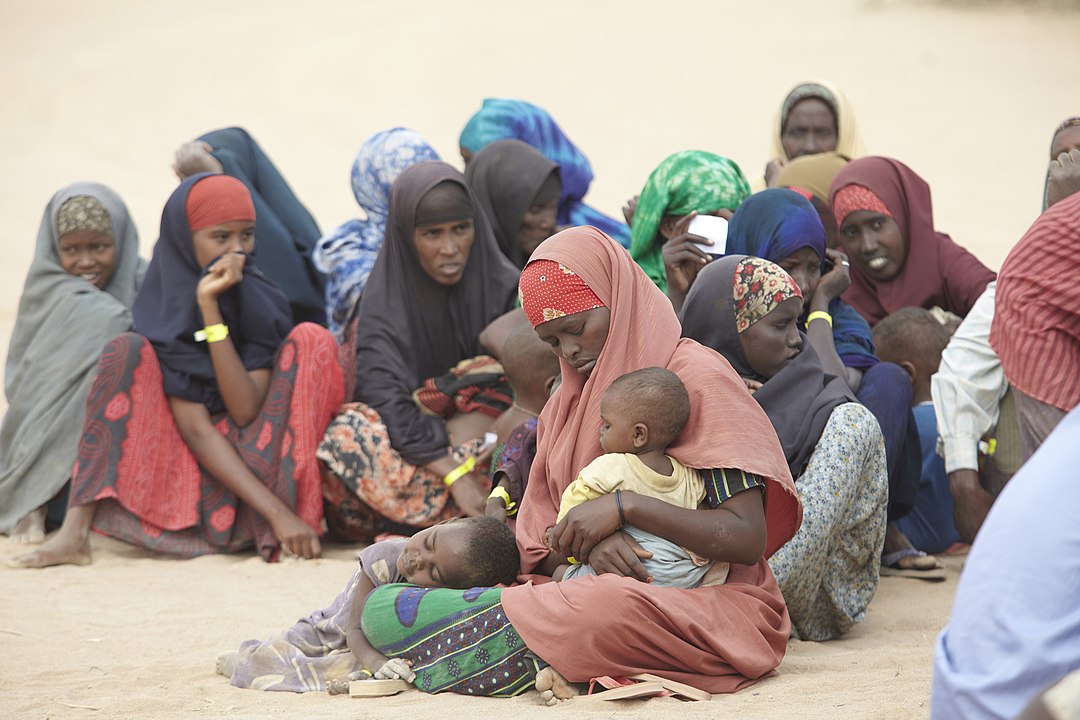
Famine and hunger killed more people in 2020 than the Coronavirus pandemic, according to Oxfam. The anti-poverty organization released a report on the relationship between hunger related crises and the COVID-19 pandemic today.
The report found that eleven people die each minute from famine and hunger related crises, which is four more than amount who die from the coronavirus in the same interval of time. According to the report, there has been a six-fold increase in people living in famine-like conditions since the pandemic began in 2020.
Coronavirus has worsened hunger crises worldwide
The report found that violent conflict is the driving force behind famine and hunger related deaths, but that the pandemic has become a compounding factor in these crises by worsening the conditions in affected regions over the past year.
The report also attributed the increase in hunger related deaths to the economic downturn suffered by many parts of the world. This decline has also been exacerbated by the pandemic, as well as the realities of climate change. Climate change has begun to limit the availability of resources in different regions drastically, making previously abundant food scarce.
The president and CEO of Oxfam America, Abby Maxman, highlighted how important it is to look past statistics and conceptualize these issues in a more human way.
“The statistics are staggering, but we must remember that these figures are made up of individual people facing unimaginable suffering. Even one person is too many,” Maxman stated.
The report noted that 155 million people around the world are currently living in crisis levels of food insecurity– a figure that is up 20 million more than it was this time last year. Two out of every three of these people are living in famine-like conditions.
“Since the COVID-19 pandemic began, vulnerable communities around the world have been sending a clear, urgent and repeated message: ‘Hunger may kill us before coronavirus.’ Today, deaths from hunger are outpacing the virus,” Oxfam said, explaining why the threat hunger poses may be more dire than the coronavirus.
Rise in hunger hotspots across the world
The areas of the world most direly affected by the hunger are Yemen, South Sudan, Brazil, India, and Sahel. Prices of essential food in Yemen have doubled since 2016 due to the Yemeni Civil War and fuel crisis. Yemen also lost more than half of its humanitarian aid package, and the number of people experiencing famine conditions is projected to reach 47,000 this month.
Over 100,000 people have been living in famine conditions since the 2011 South Sudanese independence referendum. Although South Sudan has become autonomous, it still deals with constant violence and upheaval due to conflict between different ethnic groups in the South Sudanese population.
The once bountiful country is now heavily reliant on humanitarian aid, with 8 million people depending on assistance in order to live. Climate change has also played a role in the decline of South Sudan’s agriculture.
Coronavirus shutdowns in Brazil caused a massive wave of unemployment, with more than half of Brazilians losing their jobs. Poverty rose from 4.5% to 12.8%, leaving 20 million people with less food than necessary to survive.
The huge surge in coronavirus cases in India took a massive toll on migrant workers and farmers in the South Asian country, with people having no choice but to abandon their crops due to the spread of the virus. A recent survey found that more than half the countries population have decided to eat less or eat poorer quality food in order to make ends meet.
Countries in the Sahel region saw an exponential rise in people experiencing hunger crises between 2019-2020: from 685,000 to 2.1 million. The Sahel region marks the transition between the northern Sahara desert and the southern Sudanese savanna, and has been referred to as “the world’s most neglected and conflict-ridden region” by the Norwegian Refugee Council.
Millions of people attempt to flee the region as refugees annually, with 5.3 million people have left since the crisis worsened. Climate change has also begun to ravage the Sahel, with floods increasing by nearly 200% in the last six years, decimating crops and the livelihoods of 1.7 million people.
Decreasing military spending by 20 percent could end world hunger
The report also found that global military spending has been undeterred by the pandemic, experiencing a steady rise over the past year. Spending has increased worldwide by €43 billion ($51 billion), which is six times more than the figure the United Nations believes could put an end to world hunger.
The intensification of violence in 2020 has led to record numbers of displacement, with scores of people seeking refuge from their increasingly inhabitable homes. 48 million people have been forced to find new places to live in this past year alone.
“Starvation continues to be used as a weapon of war, depriving civilians of food and water and impeding humanitarian relief. People can’t live safely or find food when their markets are being bombed and crops and livestock are destroyed,” Maxman highlighted, showing that the cost of war is more severe than many may realize.
Famine is a result of broken system
“The pandemic has also exposed and exacerbated the deep inequality of our world. The wealth of the 10 richest people increased by $413 billion last year. This is 11 times more than what the UN says is needed for its entire global humanitarian assistance. This is a symptom of a broken system,” Maxman concluded.
See all the latest news from Greece and the world at Greekreporter.com. Contact our newsroom to report an update or send your story, photos and videos. Follow GR on Google News and subscribe here to our daily email!



